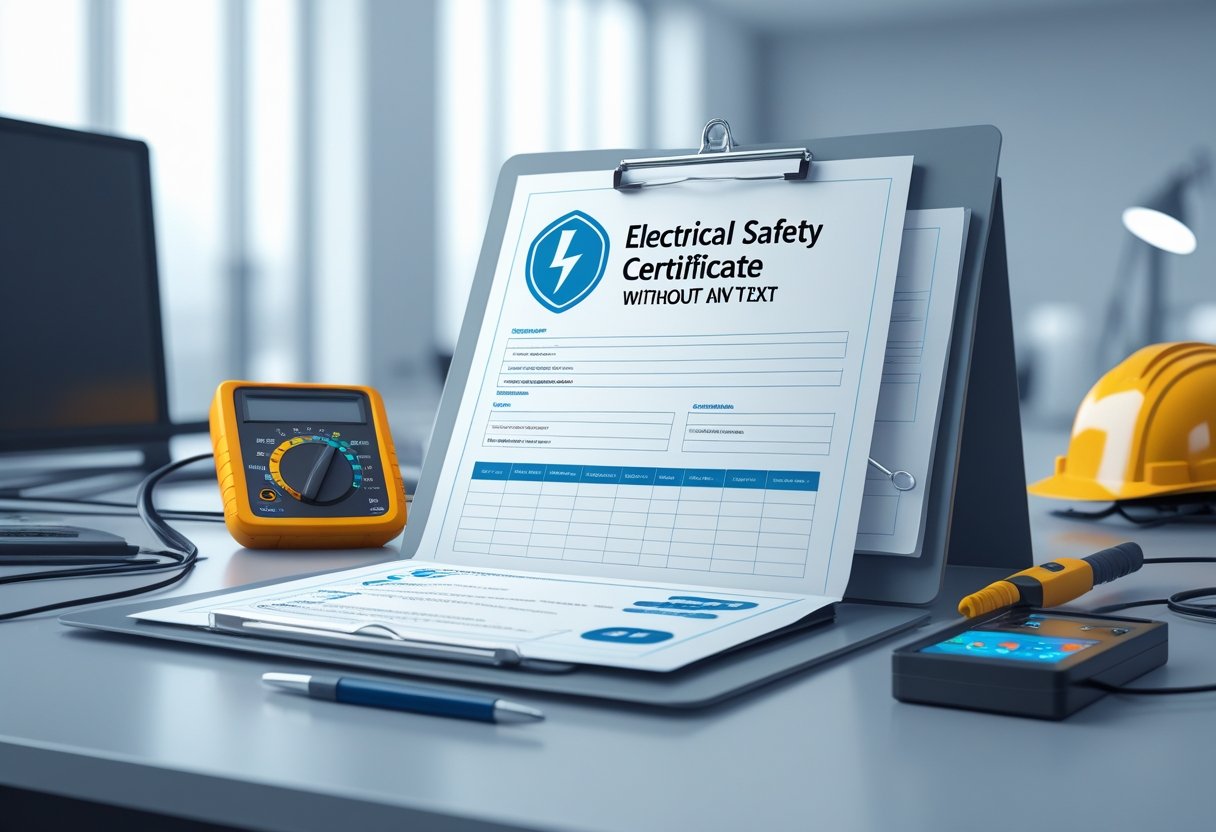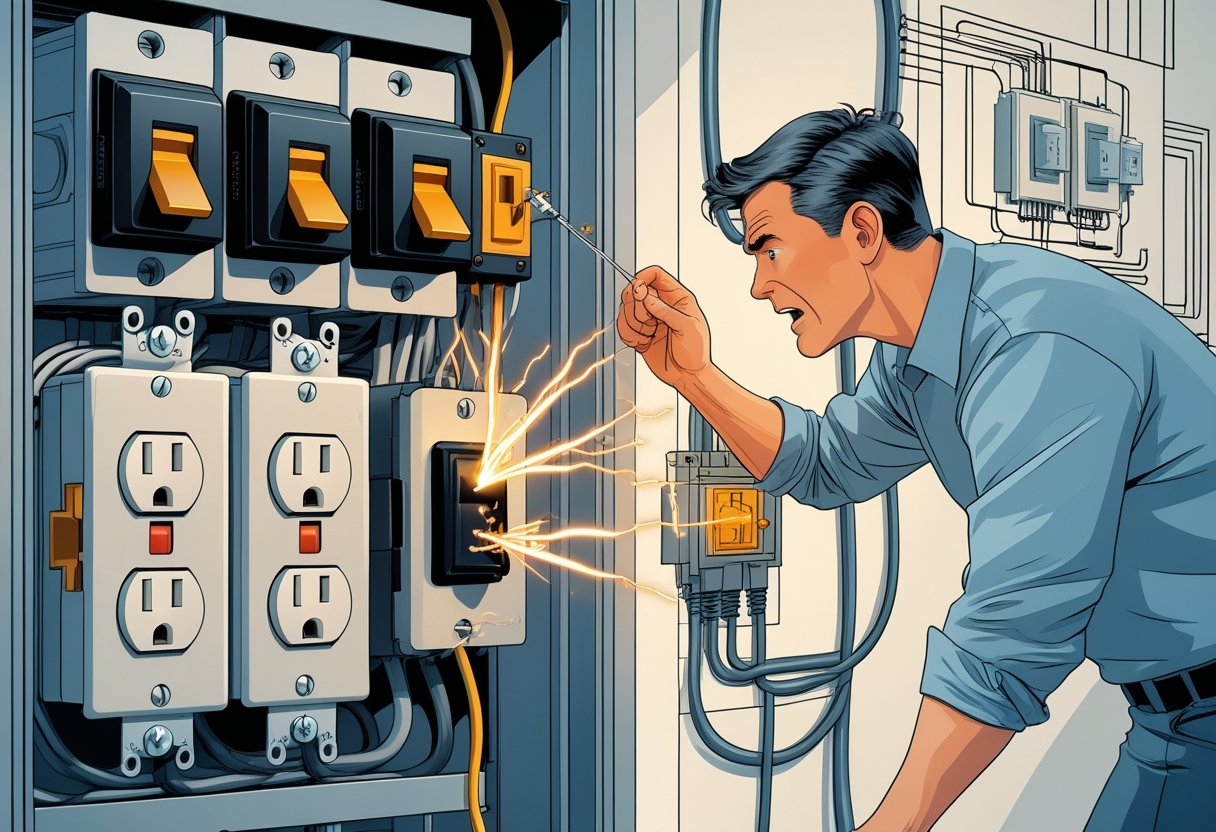In a world where electrical hazards can pose significant risks, obtaining an electrical safety certificate is an essential step for both homeowners and professionals. This certification not only enhances safety at home or on the job site but also helps ensure compliance with crucial regulations. By understanding the importance of electrical safety, you can protect your family and property from potential dangers.
If you're residing in the Sacramento area or surrounding cities, earning your electrical safety certificate can provide peace of mind and demonstrate your commitment to safe electrical practices. At AAA Electrical Services, we prioritize your family's safety with tailored solutions suited to your specific needs. Whether it's for personal knowledge or professional requirements, this certification is a valuable asset.
Investing in this knowledge is not just about compliance; it reflects your dedication to creating a safe environment. With over 42 years of expertise, AAA Electrical Services is here to support you with reliable services and guidance, ensuring that safety remains at the forefront of every electrical task.
Understanding Electrical Safety Certificates
Electrical safety certificates are essential documents that confirm compliance with specific safety standards. They protect both property and residents by ensuring electrical installations are safe for use. This section will cover the definition, types, and who needs these certificates.
Definition and Purpose
An electrical safety certificate is a formal document issued by qualified electricians or engineers. It verifies that an electrical installation meets safety standards, confirming it is safe for use. The certificate outlines various tests performed on the electrical system, ensuring compliance with local regulations.
The primary purpose is to prevent hazards such as electrical fires, shocks, and equipment malfunctions. For example, when you hire AAA Electrical Services, you receive a comprehensive assessment of your electrical systems, promoting your family’s safety at home.
Types of Electrical Safety Certificates
There are several types of electrical safety certificates, including:
- Electrical Installation Condition Report (EICR): Assesses the safety of an existing installation.
- Landlord Electrical Safety Certificate: Ensures rental properties meet safety standards.
- New Installation Certificate: Confirms that new electrical installations comply with regulations.
Each type serves distinct purposes, tailored to unique requirements based on the setting and usage. By obtaining the right certificate, you ensure your home remains safe and compliant with legal standards, a commitment that AAA Electrical Services upholds through our thorough inspections and testing.
Who Needs an Electrical Safety Certificate
Various stakeholders may require electrical safety certificates, including homeowners, landlords, and businesses. If you own or manage rental properties, obtaining a Landlord Electrical Safety Certificate is often mandatory. This certificate assures tenants of the safety of their living environment.
Businesses must also ensure their electrical installations are up to code to protect employees and customers. Regular inspections and certificates are vital for compliance with OSHA regulations. Choosing AAA Electrical Services for your electrical needs means you can trust our licensed professionals to ensure all your installations are safe and up to standard.
Legal Requirements and Regulatory Standards
Navigating electrical safety requires adherence to various legal requirements and regulatory standards. Understanding these regulations is crucial for maintaining a safe environment for both workers and families.
OSHA and Electrical Safety Regulations
The Occupational Safety and Health Administration (OSHA) enforces safety standards that employers must follow to protect workers from electrical hazards. OSHA regulations require proper training, protective equipment, and maintenance of electrical systems. A workplace must evaluate hazards, ensuring that employees are aware of risks and how to mitigate them. Key regulations relevant to electrical safety include 29 CFR Part 1910, which mandates safety practices in general industry settings. Compliance can prevent serious injuries such as electrocutions or fires. AAA Electrical Services emphasizes the importance of adhering to these OSHA standards to ensure safety in your home or business.
NFPA 70E and NEC Compliance
The National Fire Protection Association (NFPA) 70E sets forth standards for electrical safety in the workplace, focusing on arc flash and shock hazards. Businesses must conduct risk assessments and implement safety-related work practices to comply with NFPA 70E. This ensures that employees are equipped with proper personal protective equipment (PPE) and trained on safe procedures. Additionally, the National Electrical Code (NEC) provides guidelines for proper installation and maintenance of electrical systems. Both NFPA 70E and NEC compliance is essential to create a safe environment in construction and maintenance areas.
1910 Subpart S and 1910.269
Subpart S of OSHA’s regulations specifically addresses electrical safety-related work practices in general industry. This section includes guidelines for electrical installations and maintenance, prioritizing safety through protocols for working on or near live parts. OSHA 1910.269 pertains to electric power generation, transmission, and distribution, focusing on safety measures required for qualified workers. These standards lay out essential practices for maintaining safety during electrical work. AAA Electrical Services adheres to these regulations to ensure high standards of safety and compliance for their clients throughout the Sacramento area and beyond.
Key Requirements for Electrical Safety Certification
Electrical safety certification is essential in ensuring safe practices in environments where electrical work occurs. It encompasses guidelines for hazard identification, personal protective equipment, and protocols for safely managing electrical systems. Understanding these requirements can significantly reduce risks associated with electrical hazards.
Safe Work Practices and Hazard Identification
Implementing safe work practices is crucial in any electrical setting. You should conduct a thorough risk assessment before starting any job. Identify potential hazards such as exposed wires, moisture, or overloaded circuits. Ensure that everyone on-site is aware of these risks.
Proper training for workers is necessary. Familiarize them with electrical safety standards and the specifics of your environment. Documenting and regularly updating safety protocols also supports a culture of safety. AAA Electrical Services emphasizes the importance of these practices, prioritizing safety with every task, ensuring your family's well-being.
Personal Protective Equipment (PPE)
Using appropriate personal protective equipment (PPE) is vital in protecting yourself from electrical hazards. Common PPE includes insulated gloves, safety goggles, hard hats, and arc flash clothing. Ensure that your PPE meets the necessary safety standards and is well-maintained.
Before beginning electrical work, check that all required PPE is available and worn correctly. Regular training on the limitations and proper usage of PPE can enhance safety. Following these guidelines reduces the risk of electrical shock and other injuries during your projects.
Lockout/Tagout Procedures
Lockout/tagout procedures are critical for ensuring that electrical equipment is properly shut off and not able to be started up again during maintenance or repair. This involves using locks and tags to secure energy-isolating devices, which prevents unauthorized operation.
All workers should be trained in these procedures so they understand the importance of clear communication and adherence. Before starting work, properly lock out and tag all needed equipment to ensure safety. This practice helps mitigate risks associated with accidental energization, enhancing workplace safety significantly.
Testing and Inspection of Electrical Equipment
Regular testing and inspection of electrical equipment are essential for identifying potential hazards. You should conduct these inspections in accordance with the relevant safety standards, such as those outlined by NFPA 70E. This includes checking for possible wear and broken components.
Inspections should be documented clearly. Keeping records not only aids in compliance but also helps track maintenance history. Timely testing of equipment can prevent failures and enhance the overall safety of your environment. Make it a routine part of your safety practices, prioritizing both equipment reliability and safety for everyone involved.
Electrical Safety Training and Certification Process
Understanding the training and certification process for electrical safety is crucial for technicians and professionals in the field. This section outlines essential components, including training courses, hands-on activities, and assessment requirements.
Training Courses and Material
Electrical safety training courses cover a range of topics designed to equip you with vital knowledge. Courses often utilize material aligned with OSHA standards, ensuring you understand the risks associated with electrical work.
You can explore programs like the Electrical Certificate Course that discusses common electrical hazards in detail. Consider joining the Certified Electrical Safety Compliance Professional (CESCP) program offered by NFPA for a thorough grounding in pertinent regulations.
Utilizing a variety of training materials, including videos, manuals, and online resources, is beneficial. These resources enhance your learning experience, whether you are pursuing initial training or seeking to enhance your existing knowledge base.
Hands-On Exercises and Course Activities
Hands-on exercises are critical to effective electrical safety training. Engaging in practical activities helps reinforce theoretical concepts and prepares you for real-world scenarios.
Course activities might include simulations of electrical installations, safety gear usage, and emergency response techniques. Many training programs offer scenarios to practice proper safety protocols and decision-making under pressure.
Using these practical experiences, you can gain confidence in your skills. This approach mirrors the practical training offered by AAA Electrical Services, ensuring that you understand how to apply safety principles effectively in your work environment.
Assessment, Exam Scores, and Re-Certification
Final assessments are integral to evaluating your understanding of electrical safety concepts. These exams typically cover a comprehensive range of topics discussed during the training.
Scoring well on these assessments ensures that you are well-prepared to handle electrical safety in various situations. Achieving a passing score often leads to certification, validating your expertise in this critical area.
Re-certification is essential to staying current with regulations and practices in the field. Many certification programs require renewal every few years, emphasizing the importance of ongoing education in electrical safety. Consider participating in refresher courses or new workshops as they become available, ensuring your knowledge remains up-to-date.
Special Considerations for Industries and Environments
Electrical safety varies significantly across industries and work environments. Understanding these specific considerations is crucial for maintaining a safe workplace. In particular, the general industry, construction sectors, maritime operations, and electric power generation each have distinctive safety requirements.
General Industry and Construction
In the general industry and construction, adhering to OSHA electrical standards is vital. These standards protect workers from hazards like electric shock and fires. For instance, equipment must undergo visual inspection before use to ensure safety.
Additionally, employees should use appropriate personal protective equipment (PPE) such as insulated gloves and safety glasses. The use of Ground Fault Circuit Interrupters (GFCIs) is also essential, especially in wet conditions, as they can prevent fatal shocks by cutting off electricity during faults.
When it comes to installations, ensuring circuits are properly grounded is necessary. With AAA Electrical Services, you can receive tailored solutions to meet these safety demands, ensuring compliance and protection for your workers.
Maritime and Electric Power Generation
The maritime sector has unique requirements due to the environmental conditions faced at sea. Electrical systems onboard must be robust against moisture and corrosion. Regular inspections should be conducted to ensure all equipment complies with standards set by the US Coast Guard and the International Maritime Organization.
For electric power generation facilities, safety measures are equally crucial. Workers must adhere to stringent protocols to prevent electrical accidents. This often involves proper training and the strategic use of GFCIs, especially in outdoor settings.
Both industries benefit from vigilant monitoring and maintenance of electrical systems, reducing risks associated with equipment failures.
Ground Fault Circuit Interrupters (GFCIs) and Site-Specific Requirements
GFCIs play a pivotal role in ensuring safety across various environments, particularly in areas where moisture is prevalent. These devices are designed to prevent electric shocks by detecting ground faults and interrupting the circuit.
In construction and general industry settings, using GFCIs has become a standard practice. Ensuring that all temporary power installations include these devices enhances worker safety.
Site-specific requirements may also dictate additional precautions, such as the use of explosion-proof equipment in hazardous locations or increased training on electrical tasks.
Investing in the right safety measures is an essential part of any electrical setup. With AAA Electrical Services, you can ensure your workplace meets all necessary protocols for maximum safety.
Frequently Asked Questions
This section addresses common inquiries regarding electrical safety certificates. You'll find detailed information on costs, online services, free options, and more.
What are the typical costs associated with obtaining an electrical safety certificate?
The costs for obtaining an electrical safety certificate can vary widely based on factors such as location, property type, and service provider. Generally, you can expect fees to range from $100 to $500. It's advisable to obtain estimates from several providers to get an accurate idea of costs specific to your situation.
Can an electrical safety certificate be acquired through online services?
Yes, some services offer the option to obtain an electrical safety certificate online. However, this often involves an inspection by certified professionals who must verify compliance with safety standards. Ensure the provider is reputable and understands local regulations.
Are there options available for obtaining an electrical safety certificate at no charge?
In some cases, local governments or community organizations may offer programs or grants to cover the costs of obtaining an electrical safety certificate. Research your area to see if such resources are available, particularly in communities focusing on safety and homeowner support.
How can I download an electrical safety certificate?
If your certificate was issued digitally, you should receive a link or access code to download it directly from the provider. For certificates obtained through a provider like AAA Electrical Services, follow their guidance to ensure a smooth download process.
What is entailed in training for a Certified Electrical Safety Compliance Professional (CESCP)?
Training for a CESCP typically covers various aspects of electrical safety standards, regulations, and best practices. This may include both theoretical knowledge and practical exams, preparing professionals to effectively manage safety compliance in different environments.
What are the requirements for implementing an electrical safety program?
Implementing an electrical safety program requires a clear understanding of local safety regulations, employee training, and regular inspection schedules. Key components include risk assessments, safety protocols, and continuous education for all personnel involved in electrical work. Consider consulting with a service like AAA Electrical Services for tailored advice tailored to meet your specific needs.





